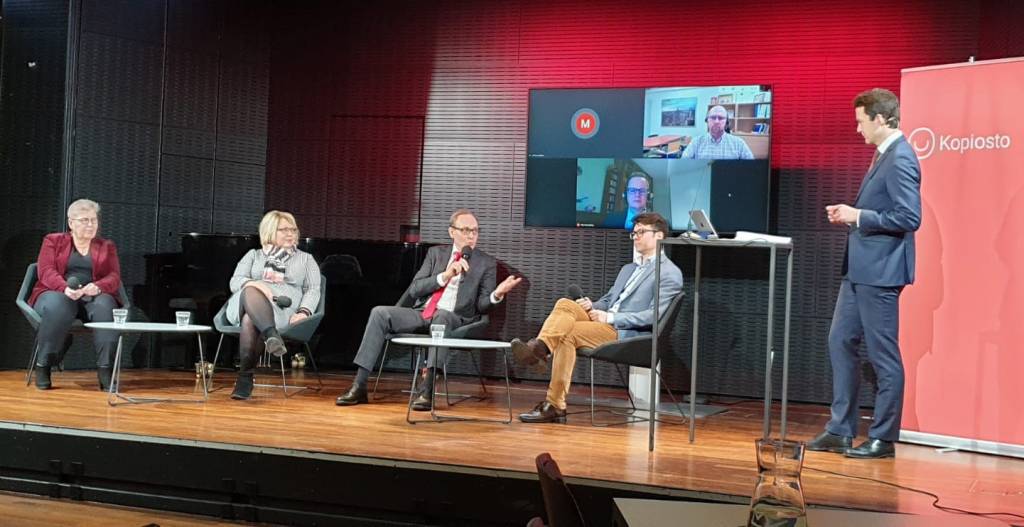
As a result of the reform, the learning materials for upper secondary schools and vocational upper secondary qualifications would be free to the students and acquired and provided to the students by the organisers of education.
In order to generate savings, state-supported pilot projects aimed at developing open digital learning materials and material banks have been carried out. The Library of Open Educational Resources is already active, and teachers can use it to search for open content that serves their needs and even make changes to it.
High-quality learning material requires effort
How can a teacher know whether the content uploaded to the Library of Open Educational Resources is of high quality? Sanna Haanpää, the Executive Director of the Association of Finnish Non-fiction Writers, says that producing high-quality learning material requires effort.
“It requires time and professional expertise to grasp the latest scientific data related to a subject, select an appropriate learning paradigm and experiment with and edit new learning materials, for example. Published learning materials are often created in a group of several textbook authors that also include academics of the subject and teachers from different schools,” says Haanpää.
Ultimately, the user of the Library of Open Educational Resources, meaning in practice the teacher, is responsible for ensuring whether the material downloaded from the bank is up to date. Published learning materials, however, are less troublesome for teachers due to the fact that the competitive pressure from other publishers enforces the publisher of the learning materials to keep the content up to date and maintain their high quality.
“Neglecting quality is the easiest way to save money,” says Haanpää. “Hopefully, high-quality learning material is not considered as a mere expense but as an instrument of competition.”
“Published learning materials will make it”
Sakari Laiho, the Director of the Finnish Book Publishers Association, also emphasises the high quality of learning materials. He believes that published learning materials will do fine in the competition with open learning materials.
“As long as quality is included as a criterion for selection, including the reliability of updates, respecting copyrights, neutral perspective and accessibility, published learning materials will make it,” Laiho says.
The Finnish Book Publishers Association is worried about the finances of municipalities, however. If the learning materials for secondary education is acquired by the organiser of education instead of students, easy ways to save money may seem attractive.
Quality criteria neglected?
According to Minister of Education Li Andersson, the goal of the compulsory education reform is to ensure that all young people have adequate resources and skills to learn new things. The quality of learning materials is not highlighted in the reform, however. Why is this the case?
“Administrators worried about euros do not often think about quality,” says Laiho. “Teachers as pedagogues understand this parameter of competition, i.e. what money can really buy. Because of this, it is important that teachers are involved in the process of deciding on the learning materials to be selected.”
Sanna Haanpää says that she understands that it is not easy to include the word “quality” in legal text. “Nevertheless, it would have been ideal if the background text of the government proposal would have highlighted the importance of quality,” Haanpää says.
According to Haanpää, students in secondary education are used to high-quality learning materials. “I hope that students will provide the organisers of education with immediate feedback if the material is not satisfactory,” Haanpää says.
—
Sanna Haanpää, Sakari Laiho and Li Andersson spoke at a seminar about the extension of and free access to compulsory education arranged by Kopiosto on 17 November, where a wide range of perspectives about the forthcoming compulsory education reform and its impact were heard.
The Association of Finnish Non-fiction Writers and the Finnish Book Publishers Association are Kopiosto’s member organisations.
Text: Maria Bregenhøj
Photo: Ria Korkiakangas
